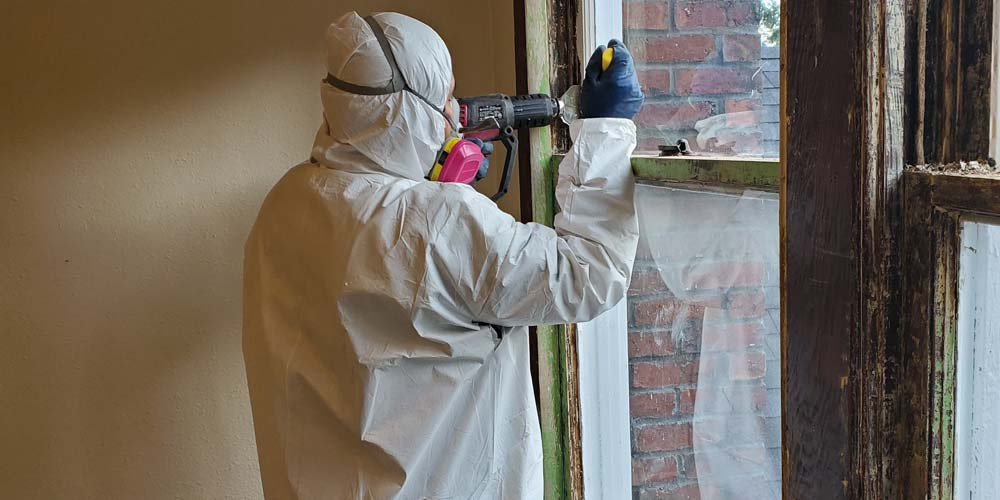Lead Removal Contractors-- Experienced Experts for Lead Reduction
Lead Removal Contractors-- Experienced Experts for Lead Reduction
Blog Article
Best Practices for Making Certain Safe and Extensive Lead Infraction Abatement
Addressing lead infraction abatement needs a multi-faceted approach to ensure both safety and security and compliance. It's the final clearance process, including thorough assessments and research laboratory screening, that absolutely verifies a lead-free atmosphere, guaranteeing lasting safety. How do these methods interconnect to ensure extensive lead reduction?

First Assessment
Conducting a preliminary analysis is an essential first step in lead infraction reduction. This stage includes a thorough assessment of the home to identify the existence, extent, and certain areas of lead-based risks. Qualified specialists, such as licensed lead assessors or risk assessors, must execute a detailed site examination, using devices like X-ray fluorescence (XRF) analyzers to accurately find and determine lead focus in paint, dirt, dirt, and water.
The analysis needs to additionally consist of an evaluation of the building's background, previous reports, and any type of issues or wellness problems reported by occupants - Lead Removal Contractors. Documenting the findings carefully is important, as these documents create the basis for creating a reliable reduction technique. A comprehensive assessment likewise includes tasting and laboratory analysis, which are critical to confirm the visibility of lead and overview subsequent activities
Moreover, it is necessary to interact the outcomes transparently to all stakeholders, consisting of home proprietors, renters, and regulatory authorities. By making sure that the initial assessment is performed with precision and roughness, specialists can lay a strong structure for a targeted and reliable lead abatement process, eventually protecting public wellness and guaranteeing conformity with governing requirements.
Correct Containment
Appropriate containment is crucial to avoid the spread of lead pollutants during reduction activities. Successfully managing control decreases the danger of lead dust and particles moving to non-work locations, thereby safeguarding both the environment and people outside the prompt job zone.

Regular examinations of the control area are necessary to inspect for violations or weak points in the barrier. Any type of identified issues should be quickly addressed to keep the honesty of the control. By sticking to these methods, reduction jobs can effectively manage lead contamination and minimize involved health and wellness risks.
Worker Security
Making certain worker defense is vital during lead reduction tasks to avoid work-related direct exposure to dangerous lead particles. Crucial steps consist of the use of personal protective tools (PPE) such original site as respirators, handwear covers, and official statement full-body suits especially made to block lead dirt and fumes. Workers must undertake thorough training on the right use and maintenance of PPE, including healthy screening for respirators to guarantee optimum efficiency.
Engineering controls, such as neighborhood exhaust ventilation systems, are critical in minimizing airborne lead focus in the work atmosphere. Administrative controls must likewise be applied, consisting of limiting the period of exposure and revolving workers to lower specific direct exposure times. Normal medical security and biological monitoring are crucial for early detection of lead absorption, enabling timely intervention and treatment.
Additionally, developing a purification protocol is essential. Workers need to adhere to rigorous purification treatments prior to breaks and at the end of their change to avoid lead dirt from being brought outside the workspace. This consists of complete hand and face cleaning with lead-specific cleaner and altering out of contaminated garments.
Thorough Clean-up
Maintaining a safe workplace extends past employee protection and incorporates thorough cleanup to make sure lead particles are thoroughly removed from the website. The procedure of meticulous cleanup is essential in avoiding the recontamination of the eased off area and securing both current and future owners.
To attain a comprehensive clean-up, all workplace need to be methodically sanitized. This includes using specialized HEPA (High-Efficiency Particulate Air) vacuum cleaner cleaners and wet-wiping strategies to capture and get rid of great lead dust that might have picked surfaces. It is important to clean up all straight surface areas, including floors, window sills, and countertops, in addition to vertical surface areas that might have trapped lead particles.
Employees need to use proper individual protective equipment (PPE) during cleaning to avoid exposure to residual lead dirt. Used cleansing materials such as wipes, sponges, and wipe heads ought to be dealt with according to contaminated materials disposal policies.

Final Clearance
Final clearance is the important wrapping up stage of lead reduction that determines whether the website is secure for reoccupation. This essential action involves comprehensive inspection and testing to confirm that all lead risks have been successfully eliminated. The procedure begins with a visual inspection by a certified lead-based paint inspector or threat assessor to guarantee no noticeable dust or particles continues to be. This is complied with by gathering dust wipe samples from different surface areas, consisting of floorings, windowsills, and other straight surfaces. Lead Removal Contractors.

Last clearance testing not only shields future occupants however likewise ensures compliance with neighborhood, state, and government policies. It offers as a documented validation of the abatement service provider's adherence to sector ideal practices. Ensuring an extensive and successful last clearance is essential in safeguarding public health and promoting count on the reduction process.
Final Thought
Making certain risk-free and detailed lead infraction abatement necessitates a diverse technique incorporating initial evaluations with sophisticated discovery approaches, reliable control approaches, stringent employee protection protocols, and careful clean-up treatments. The final clearance phase, featuring thorough inspections and lab testing, is essential to verify compliance with EPA criteria. Adherence to these ideal practices guarantees a safe atmosphere for owners, mitigates wellness threats, and maintains regulative needs, consequently promoting public wellness and safety and security in lead-affected areas.
Report this page